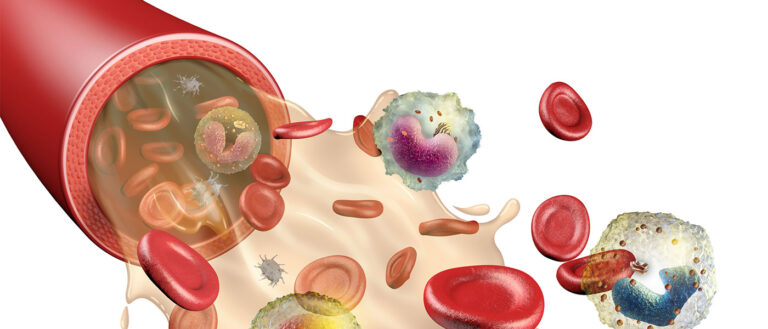Case Western Reserve University, collaborators at University Hospitals and University of Pittsburgh trauma center work to develop rugged, portable sensor
Scientists at Case Western Reserve University are leading the development of TraumaChekTM, a hand-held medical device to quickly assess a wounded soldier’s critical clotting issues and other blood conditions in the battlefield.
The new sensor, if successful and adopted in the field, would represent the next generation of their successful ClotChip®, which emergency workers can use to measure how well a patient’s blood may clot. ClotChip was originally designed by Case Western Reserve researchers for hemophilia and anticoagulation therapy, but has more recently been adapted for use in time-critical trauma conditions, especially for military use.
This new project, in collaboration with University Hospitals in Cleveland and the Pittsburgh Trauma and Transfusion Medicine Research Center at the University of Pittsburgh, is supported by a four-year, $3 million grant from the U.S. Department of Defense (DOD).
The new device is being designed to guide medical professionals caring for soldiers who have suffered traumatic injuries. Its expanded capabilities are expected to include more detailed information about not only the clotting ability of a trauma victim’s blood, but several other measurements related to “trauma-induced coagulopathy,” or TIC.

“This is going to save soldiers’ lives because it will give emergency medics the right information faster than ever before,” said Michael Suster, research assistant professorin the Department of Electrical, Computer, and Systems Engineering and co-principal investigator (PI) for the DOD-funded research. “We know that trauma is one of the leading causes of death, and proper treatment in the ‘golden hour’—the first hour after traumatic injury—offers a better chance to save lives.”
Suster and Pedram Mohseni, the Goodrich Professor of Engineering Innovation and chair of the Department of Electrical, Computer, and Systems Engineering, developed the underlying engineering behind ClotChip in 2014-16. They introduced a device at that time which they said analyzes blood 90 times faster than other methods, using only a single drop of blood at the point of care.

The new prototype will be developed in collaboration with Anirban Sen Gupta, a professor of biomedical engineering at Case Western Reserve, whose research focuses on novel hemorrhage-control technologies. He is independently working toward innovating and advancing platelet-inspired nanotechnology systems to treat severe bleeding in surgery and trauma.
“This is an exciting advancement for our continued collaborative research,” Sen Gupta said. “It also opens the doors to start testing potential treatments with synthetic blood surrogates like artificial platelets and hemostatic agents that are being developed in parallel in our labs in biomedical engineering at Case Western Reserve and at Haima Therapeutics.”
Haima Therapeutics is a biotechnology company focused on bleeding control technologies Sen Gupta co-founded in 2016.
Collaboration with University of Pittsburgh, University Hospitals
Matthew Neal, director of the Pittsburgh Trauma and Transfusion Medicine Research Center at the University of Pittsburgh, is also co-PI on the project and will lead the clinical assessment of TraumaChek with human blood samples.
“The technology behind TraumaChek addresses a major gap in the field of trauma care,” Neal said. “This device has the potential to save the lives of soldiers in austere environments, but also has important potential applications for pre-hospital and rural civilian trauma care.”
Also on the project: Sanjay Ahuja, the Dominic Piunno Endowed Chair in Hemophilia & Bleeding Disorders and professor of pediatrics at the School of Medicine, clinical director of pediatric hematology/oncology and director of the Rainbow Hemostasis & Thrombosis Center at University Hospitals in Cleveland, who said the work represents the ideal collaboration between clinicians and scientists.
“A bedside need spurred the development of a coagulation testing system,” Ahuja said. “We took that bedside problem to the engineering bench and are innovating a coagulation assay that has the potential to save millions of lives otherwise lost to trauma.”
‘Trauma-induced coagulopathy’

TraumaChek, if successfully developed, will give medics more immediate and detailed information about the clotting ability of a trauma victim’s blood plus measurements of what medical professionals call “trauma-induced coagulopathy” or TIC.
TIC is a complex event, Mohseni said, involving dysfunction of multiple steps within the blood-coagulation process and its diagnosis requires specialized lab tests now only done in some well-equipped hospitals—and never in the field.
“Each dysfunction within coagulation process requires a specific treatment in terms of transfusion of whole blood or a blood component such as plasma or platelets,” he said.
TraumaChek would also “preserve valuable and scarce blood products on the battlefield,” Mohseni said. “Military medics would know to not infuse platelets to someone who doesn’t need it, for example. This is a huge advancement—and one that could someday have use in civilian trauma situations as well.”
The project team also includes doctoral students Sina Pourang and Chris Delianides in the electrical, computer, and systems Engineering and Dante Disharoon, a research associate in the biomedical engineering.
For more information, contact Mike Scott at mike.scott@case.edu.
This article was originally published Oct. 20, 2021.

